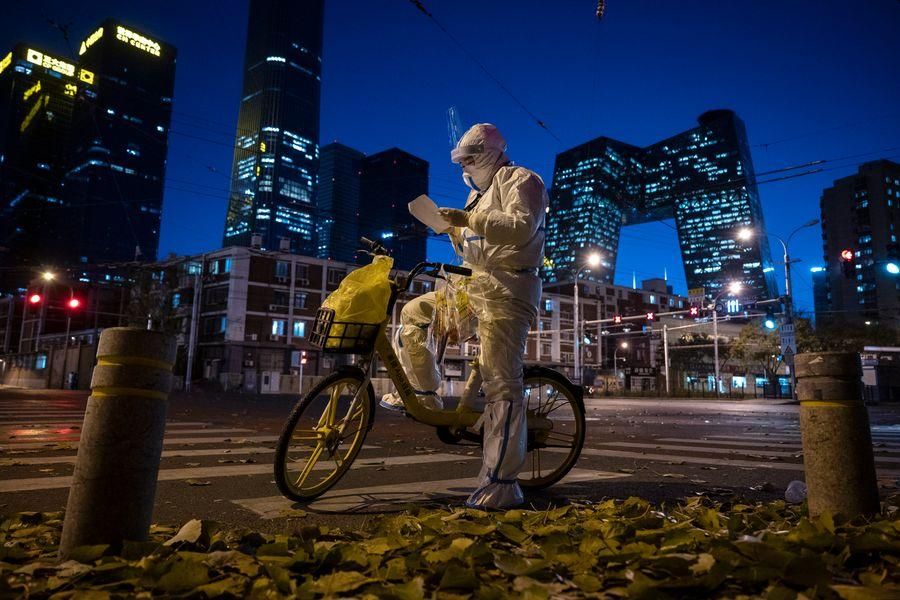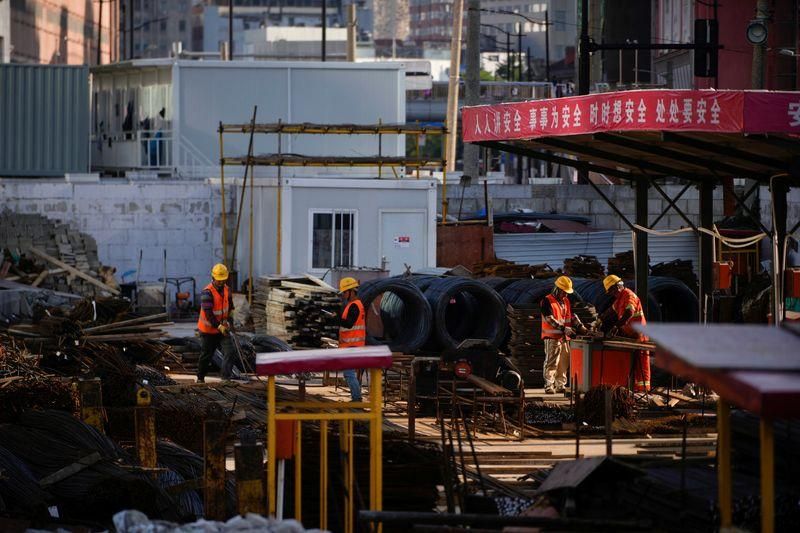By Eric Vandenbroeck
and co-workers
China's Economy
China’s growth problem just got worse. That is the unmistakable
conclusion that can be drawn from the 20th National Congress of the Chinese
Communist Party (CCP).
For President Xi
Jinping, the congress was a stunning success: he secured an unprecedented
third term as CCP leader and eliminated any semblance of
political competition. But that does not bode well for Chinese prosperity.
Increasing autocracy is colliding with a dynamic economy, and something has to
give.
That something is
likely to be economic growth, which is now at risk. Between 1980 and 2020, the
Chinese economy enjoyed an annual average growth rate of nine percent in real
GDP. In 2022–23, however, the International Monetary Fund expects the Chinese
economy to grow less than four percent. Although China’s growth should remain
positive, the magnitude of such a sharp slowdown from the earlier hyper-growth
trajectory is the Chinese equivalent of a recession.
This dramatic
shortfall is traceable to many short-term factors—not the least of which is the
ongoing rolling lockdowns Xi insists are necessary to maintain China’s patently
impractical “zero-COVID policy.” But there are also several other forces at
work, especially the long overdue implosion of China’s overly extended property
sector, nagging supply chain disruptions, downward pressures on global trade,
and the impact of the war in Ukraine.
Even though Chinese
Covid infections have surged to a record high, sparking scattered outbreaks of
social unrest, it is reasonable to presume that these headwinds will eventually
subside. When that occurs, the Chinese economy should experience some recovery.
Yet the outcome of the 20th Party Congress ensures that any such snapback is
likely to be short-lived. That is because, in his third term, Xi plans to focus
less on economic growth and more on national security. As he warned the party
congress, China faces “unparalleled complexity, graveness, and difficulty” when
“navigating perilous, stormy seas.” For Xi, that is less about economics
and more about domestic control and geopolitical challenges.
Notwithstanding Xi’s
interpretation, China ultimately must face the challenge of balancing economic
growth with national security. The decisions announced at the party congress
will likely make that already difficult trick harder to pull off.

Slowing Down
A country’s
longer-term economic growth potential can be said to consist of two factors:
growth in the workforce and growth in the workforce's productivity. The Holy
Grail of economic growth and development is an expanding and increasingly productive
workforce. For 40 years, it worked like a charm for China, where a demographic
youth bulge rapidly expanded the working-age population. This expansion was
further amplified by a massive relocation of Chinese workers from
low-productivity jobs in the countryside to higher-productivity employment in
the cities. That shift was the basis of the economy’s explosive growth.
That was then. Today,
China’s working-age population is shrinking, and the population of older adults
is multiplying; this trend will likely continue for at least the next 25 years.
Such is the legacy of China’s one-child policy, which the CCP ended in 2016.
The party has been desperately (and so far unsuccessfully) trying to reverse
its effects ever since. Meanwhile, urbanization has slowed; although workers
are still leaving low-productivity jobs on farms and heading to
higher-productivity jobs in urban areas, they are doing so in smaller numbers
than in the past.
With the working
population shrinking, productivity growth must accelerate to keep the economy
on a solid growth trajectory. That is unlikely to happen. Early signs of
trouble are already apparent: after rising 1.1 percent a year, on average, from
1982 to 2010, China’s growth in total factor productivity (a key ingredient of
a country’s economic potential) declined by an annual average of 0.6 percent
between 2011 and 2019. This was primarily the result of decisions made during
Xi’s first two terms that shifted investment and employment away from the
high-productivity private sector and back toward ossified state-owned
enterprises.
Innovation, long a
critical source of productivity growth, is also at risk in China. To its
credit, the Chinese government has moved away from its historical reliance on
importing technologies from more advanced countries to encourage homegrown
high-tech expansion. China’s industrial policy initiatives, such as “Made in
China 2025,” have supported these efforts with massive state subsidies. But
when it comes to high-tech development, the CCP’s motives have less to do with
economics than security. Cutting-edge surveillance technologies aid Beijing’s
repression of ethnic minorities in Xinjiang Province and help the CCP track the
broader population under the socially destabilizing guise of zero-COVID containment.
Even more important are the innovations the CCP directs toward developing
advanced military capabilities: hypersonic missiles, stealth aircraft, and
world-class naval and space programs.
This is where
conflict enters China’s innovation equation. The United States will not allow
China to become a techno-superpower. Indigenous innovation for economic
prosperity is one thing. Indigenous innovation for military power projection is
another matter altogether. Washington is no longer willing to let Beijing
finesse this distinction. Actions taken by the Biden administration in early
October, on the eve of the 20th Party Congress, imposed draconian export
sanctions on Chinese purchases of American-made advanced computing and
semiconductor products, with the intent of strangling leading Chinese efforts
in artificial intelligence and quantum computing.
For China, such
restrictions pose a significant threat. Notwithstanding the hundreds of
billions of dollars of Chinese capital that has gone into developing a domestic
semiconductor industry, the “chips gap” between Washington and Beijing has
continued to grow in design and production. The party congress made China’s
determination to close the gap clear, but the Biden administration’s recent
actions make success unlikely.
The party congress
also sounded the death knell for the Chinese entrepreneurial activity that had
promised a productivity windfall in recent decades. In a series of sweeping
regulatory actions in the summer of 2021, the Chinese government severely
restricted several of China’s most popular online industries, including gaming,
video, and music, and effectively closed down a thriving private tutoring
sector. These actions have crushed many of China’s once-dynamic Internet
platform companies, including Alibaba, Baidu, JD.com, Meituan,
and Tencent. The government has attempted to soft-pedal the regulatory zeal
behind the crackdown, but the stock market carnage in what had been China’s
most dynamic sector leaves little doubt of the damage that has been done.
These moves were part
of the policy agenda Xi calls “Common Prosperity”—an effort to limit the
concentration of wealth and combat income inequality. The party congress
inserted this policy into the CCP’s constitution, reinforcing the negative
productivity implications of the regulatory crackdown on the Internet sector.
Not only are potential entrepreneurs facing new prohibitions on specific
business lines, but these risk-takers now must consider the possibility of
reduced financial rewards for their hard work.

Uncomfortable Truths
History also suggests
a potentially dangerous tension between economic growth and security. In his
seminal study of the rise and fall of great powers, the historian Paul Kennedy
stressed the risks of “imperial overstretch”—the tendency of great powers to
expand their military forces beyond what their economies can support. A classic
example is the United Kingdom, which by the mid-nineteenth century lacked the
foundational support of its domestic economy necessary to support a far-flung
empire and the world’s largest navy.
The security focus of
the party congress suggests that China may be on the same perilous path,
attempting to expand its global clout before it has completed the heavy lifting
on its economy. Before Xi’s ascendance, there was a broad consensus within
China’s senior leadership circles that an economic rebalancing was necessary.
It was agreed that there should be a structural shift from exports to
consumption, manufacturing to services, and surplus saving to investing in a
weak social safety net. It was a compelling argument, but it never bore fruit.
At best, China’s rebalancing remains incomplete, underscoring the genuine
perils of a premature global power projection that could further sap
productivity growth.
There is little
reason to believe that the Chinese leadership has grasped these problems. The
newly appointed seven-member Standing Committee and the 24-member Central
Committee of the Politburo lack economic expertise. The departure from the
office of seasoned economic advisers such as Wang Qishan, Liu He, Guo Shuqing, and Yi Gang—along with the upcoming retirement of
Premier Li Keqiang, who effectively oversaw the management of China’s
economy—underscores the tilt in ranks of the senior leadership away from
economics and toward national security.
Of course, since Xi
has centralized so much authority in his own hands, national leadership teams
matter far less than they used to, especially compared with the long-standing
model developed by the Chinese leader Deng Xiaoping,
which stressed collective leadership by consensus. Xi’s team is now made up
entirely of loyalists, all of whose appointments were personally vetted by Xi,
and there is little or no room for debate, considering alternatives, or
speaking truth to power. As productivity falls and Chinese growth stagnates, it
is unclear who, if anyone, will tell Xi the toughest truth of all: that his
obsession with security is undermining China by weakening the economic
foundations on which the country’s strength depends.
For updates click hompage here